Windlass 1840 "Heavy Cav" Sabre
Oct 31, 2017 1:31:31 GMT
Post by Afoo on Oct 31, 2017 1:31:31 GMT
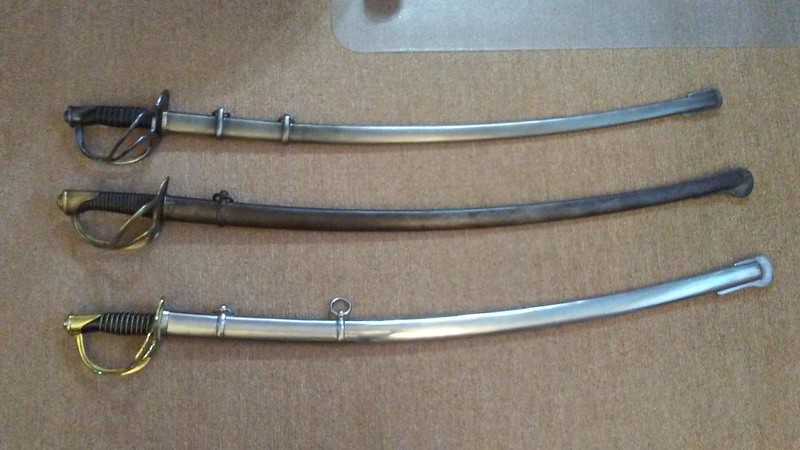
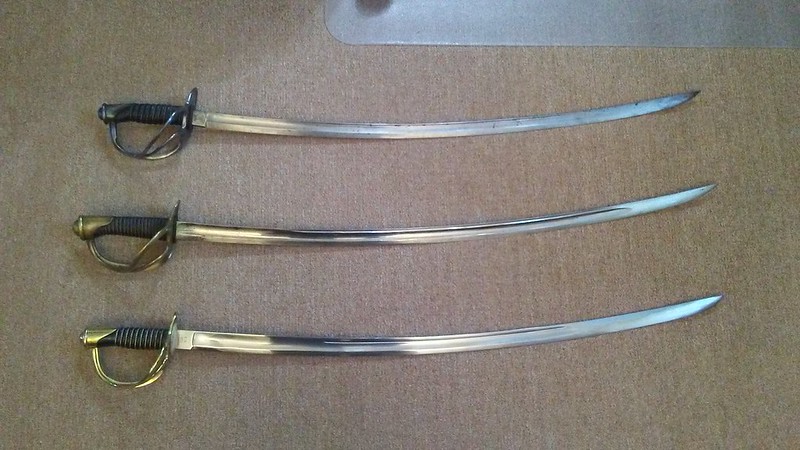
Top: US 1906 sabre.
Middle: French Mlle 1833 LC
Bottom" Windlass 1840 "Heavy"
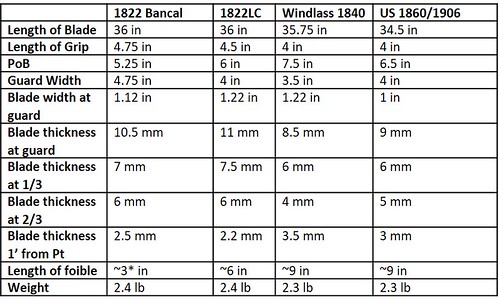
Note: Bancal has been shortened by ~2 inches. Full details and review of 1822 LC here
Preamble
I have been looking at the Windlass 1840/CS 1860 for a while now. It seems to have a reputation for being a solid handling replica – Dave Kelly’s old review seemed to indicate that it was similar to some of his original examples, though given the variability associated with this pattern that may not mean much. If this is indeed true, then it’s a great bargain at $134 from KoA, coming in around half that of the Princess of Wales and the old Windlass 1906 Commemorative before it went on close out. However, the international shipping and exchange rate always put me off
Recently, the 1840 “Heavy Cav” sabre recently became available from Reliks here in Canada. At $200 Cad without the inconvenience of international shipping, I was tempted. The fact that I needed a replica scabbard for my antique 1822’s sealed the deal and it was dully purchased.
History
Lots has been writing about the history of the US 1840 “wristbreaker” – some recent threads will have some heated discussions concerning the origins of that term. From my understanding the 1840 came about when the US started looking for swords to replace their old 1833 pipe-back blades. They were impressed by the French 1822 LC (as were most people in Europe so it seems given their proliferation), However, for some reason they were unable or unwilling to obtain them from France. However, the Americans were able to copy the design and implement it as the basis of their 1840 model sword. Production occurred across a wide range of firms both in the US and in Germany, some of greater quality than others it seems.
I am not an expert in the history of the 1840 – and frankly that’s not the purpose of this review. What is important to note from this short excerpt though is that a) the 1840 is based off of the French 1822. Fortunately I have an 1822 in my collection, and will use it as a reference throughout this review and b) the 1840 was reputedly of lower quality than the 1822, and even then there was a huge range in workmanship within the 1840 family so take these comparisons with a grain of salt. Yes, the Windlass 1840 may fall short in some areas of handling and dynamics relative to its French ancestor, but so too might have an original 1840.
The US 1860 “light cav” was an attempt to lighten the sword and improve its handling. The stats are accordingly different, but since they share a similar ancestry I figured it was including in this review for comparison. The stats for the 1822 Bancal serve no purpose, and are frankly there because I forgot to delete them from the table >.>
The Guard
I figured I would get this out of the way first – the guard sucks. Honestly I was almost tempted to refund it right away based off of my revulsion to the thing. The guard on the Windlass is severely undersized relative to its French counterpart – being almost half an inch narrower. The brass bars are also much slimmer and under-built. The front of the guard is also smaller, and missing the distinct “lip” around the central ovoid component, giving it a faceless look like a monster from Dr. Who. The grip is also under-sized by half an inch, giving the whole thing a squished look. I was rather disappointed by this aspect since it does not really come through in the pics from KoA. Moreover, this should have been the EASIEST part of the sword to get right – there are so many 1840’s/1822’s available for reference and, unlike a blade, the guard components are simply cast into a mold and polished – making the guard the proper size does not significantly increase the cost or production time, but yet they did not.
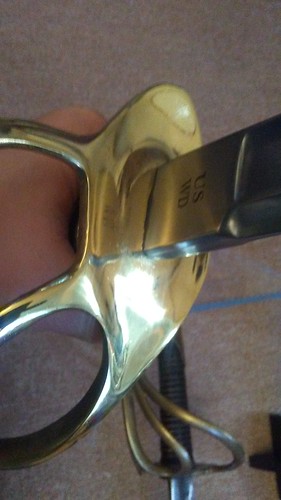
Windlass 1840, or Sci-fi villain?
The guard from the Windlass 1840 actually bears a closer resemblance to that of the 1860 light cav model, which also happens to provide a better match for the grip length and shape. As such I can overlook the smaller, lighter guard if I pretend that this is a re-hilted 1840 blade. However, this does not solve the problem with the guard being too narrow overall, nor the lack of face.

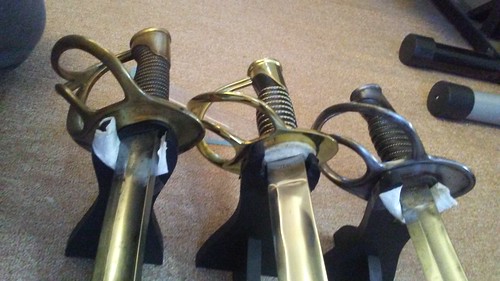
Left to right: French 1822, Windlass 1840, US 1906/1860. Note the thickness of the bars and the size of the central ovoid. The bars of the 1860 are also more "squashed together" than the other two, as verified by the stats table
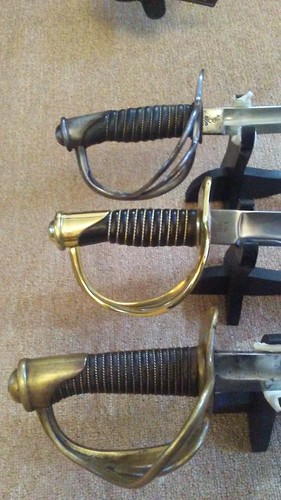
Grip lengths. Top to Bottom; 1906. Windlass 1840, 1822. The Windlass better matches the 1906/1860 in terms of shape and length
I was also disappointed to note that the guard bars were deformed – looking like they were pushed outwards away from the hand. I also noticed that the central knuckle bow/main guard branch was offset at an angle. I suspect that this particular guard got banged up during the assembly process and am willing to chalk this up to shoddy QC. However, previous reviews of the Windlass 1833 indicated that the used a damaged example as the basis for their castings – as such ALL of their 1833 replicas had the same errors for a while. With this in mind I would not be surprised if this mistake was common to the 1840 replica line as a whole.
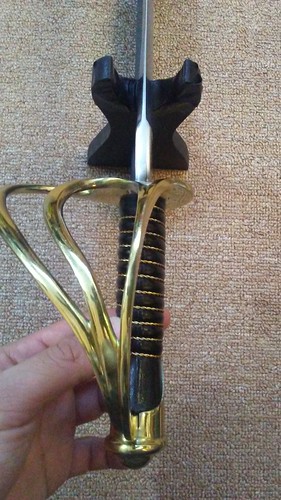
Off-centre knuckle bow
The Blade
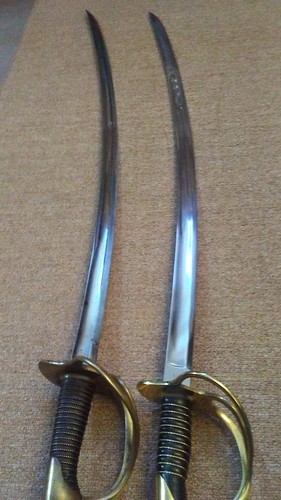
Here we get to the interesting part. The 1840 always stood out to me since it was one of the few Windlass replicas with good taper on KoA – starting from a 7 mm stock and going to just north of 3 mm. From the table above, we see that this example does not disappoint. What’s more, the fullers, while lacking the crisp, sharp definition of the original 1822, are surprisingly deep. I actually measured the blade thickness at the thinnest part of the fuller and got an astounding 2 mm (picture below is actually to scale – or as accurately as I could measure). Whats more, the thinnest part of the 1822 LC at the apex of the fuller is also 2 mm. The Windlass looses a bit at the top of the blade in the form of a smaller secondary fuller and thinner spine, but overall the profile of the blade is actually quite good
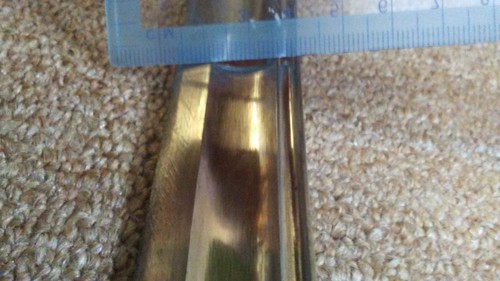
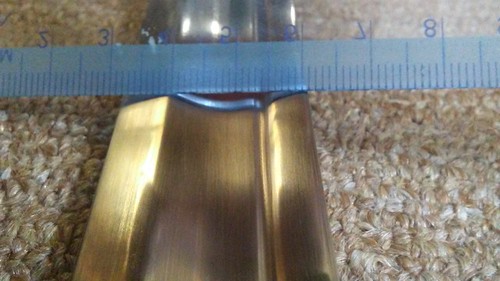
Illustrating depth of the fullers on the 1822 (left) and Windlass 1840 (right)
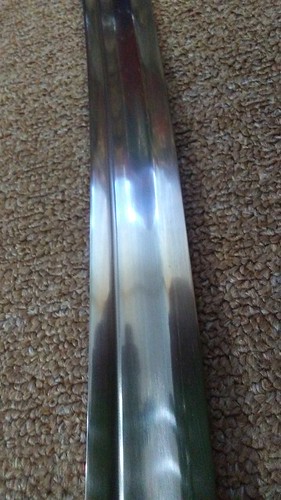
Weak secondary fuller game from the Windlass, though the main fuller is not bad
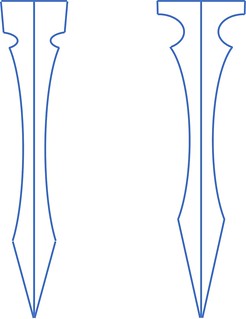
Blade profiles of the Windlass (left) and 1822 (right) taken ~1/3 up the blade. Drawings to scale. You are welcome. Note that the Windlass has a much smaller gap between the edge and the start of the fuller. This is actually more similar to my Pre-1871 production 1822 LC discussed here, so is not entirely inaccurate for an 1840. Also note that the thinnest part of the blade is ~2 mm for both
What does let it down is the length of the fullers – on the 1822 LC the fullers extend a good 3-4 inches down the blade further than the Windlass, adding stiffness and removing weight. 9 inches from the tip the 1822 is maybe 5-6 mm thick, but the blade is still heavily fullered. The equivalent point on the Windlass is 4 mm of solid, ovoid steel. Despite this, the Windlass is overall lighter than the 1822 by 0.1 lb. I am sure most of that comes down to the smaller grip and guard, but it suggests that the weight of the blade is not significantly different from the original
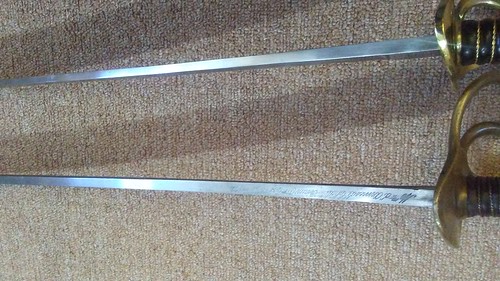
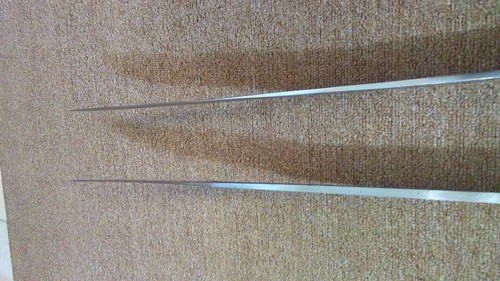
More views showing the blade thickness and tapper of the Windlass (top) relative to the 1822 (bottom). Note the length of the 1840 foible (more pictures below)
The markings are pretty standard Windlass stuff. The production date is quite optimistic though. I do like that they have the date wrong – at least they made an effort to ensure that this could not be un-knowingly passed off as an original example.
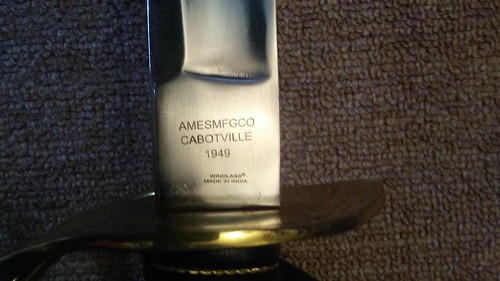
Another interesting thing to note is that the profile of the 1822 tapers much sharper than the Windlass near the tip. Its not a huge difference, but it ensures that the Windlass 1840 will NOT fit into an original 1822 scabbard, while an 1822 will happily make itself at home in the Windlass one.
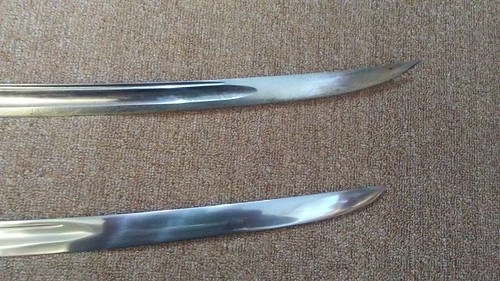
View showing the tip of the 1822 (top) and Windlass (bottom). Notice the different shape - the 1822 tapers much more gradually to make the tip. Also note the significantly longer foible on the 1840 and lack of definition (if not depth) of the fullers.
Handling
Handling wise, its not as good as the 1822 – I don’t think any of us reasonably expected it to be. However, just because a replica does not match the original doesn’t make it bad either – the CS 1796 is a good example of that. It not close to the original, but its still a pleasant, usable sword. The Windlass 1840 in my hands is different. Its usable, but its not fun – I would put it as indifferent or perhaps slightly below, which according to Dave Kelly’s now legendary review may be reflective of some of the originals. Given the weight and blade measurements though I puzzle to figure out why this is – perhaps the shorter grips? Maybe I just need to get used to the extra mass compared to my 1822’s, or perhaps we accept that a sword is more than a collection of numbers and figures on an excel file. Either way, it gets a solid “meh”
Overall.
At first, I was ready to knock this one to the ground. The handling is a solid meh, and then it goes downhill from there – between the misshapen guard, short grip and bent knuckle bow, I was kinda disappointed, especially since we have other replicas available like the Windlass 1906 and Princess of Wales or even the CS 1796. Then I remembered that all these examples go for almost twice as much as the humble Windlass 1840.
My recommendation is still to go for the Princess of Wales or a (now discontinued) 1906 – they are much better replicas from both a functional or aesthetic point of view. If you are on a budget or are unwilling to commit $250 to a replica, then the 1840 will do you well. If you are a person for whom form follows function and can overlook the aesthetic/QC issues surrounding the Windlass’ hilt and guard, then the 1840 becomes an even better buy since you can enjoy its strong points while avoiding the bad.
While not effecting function, the QC issues with regards to the bent knucklebow strike a very bitter blow in my assessment. I have a few Windlass rapiers, and those turned out nicely. I also have their 1906 commemorative and the quality on that was good. However, of the two "budget" windlass sabres I owned (the 1840 Artillery and this 1840 HC), both have severe QC issues which really shake my confidence in the brand, at least in this market. Then again, the 1840 goes for half the price of the rapiers and the 1906 so perhaps its what I should expect.
Dynamics: B
Aesthetics: C-
Historical accuracy: B-
Overall package: C+*
*Note that I tend to prioritize aesthetics over handling. Your mileage will vary.
Full res images here







